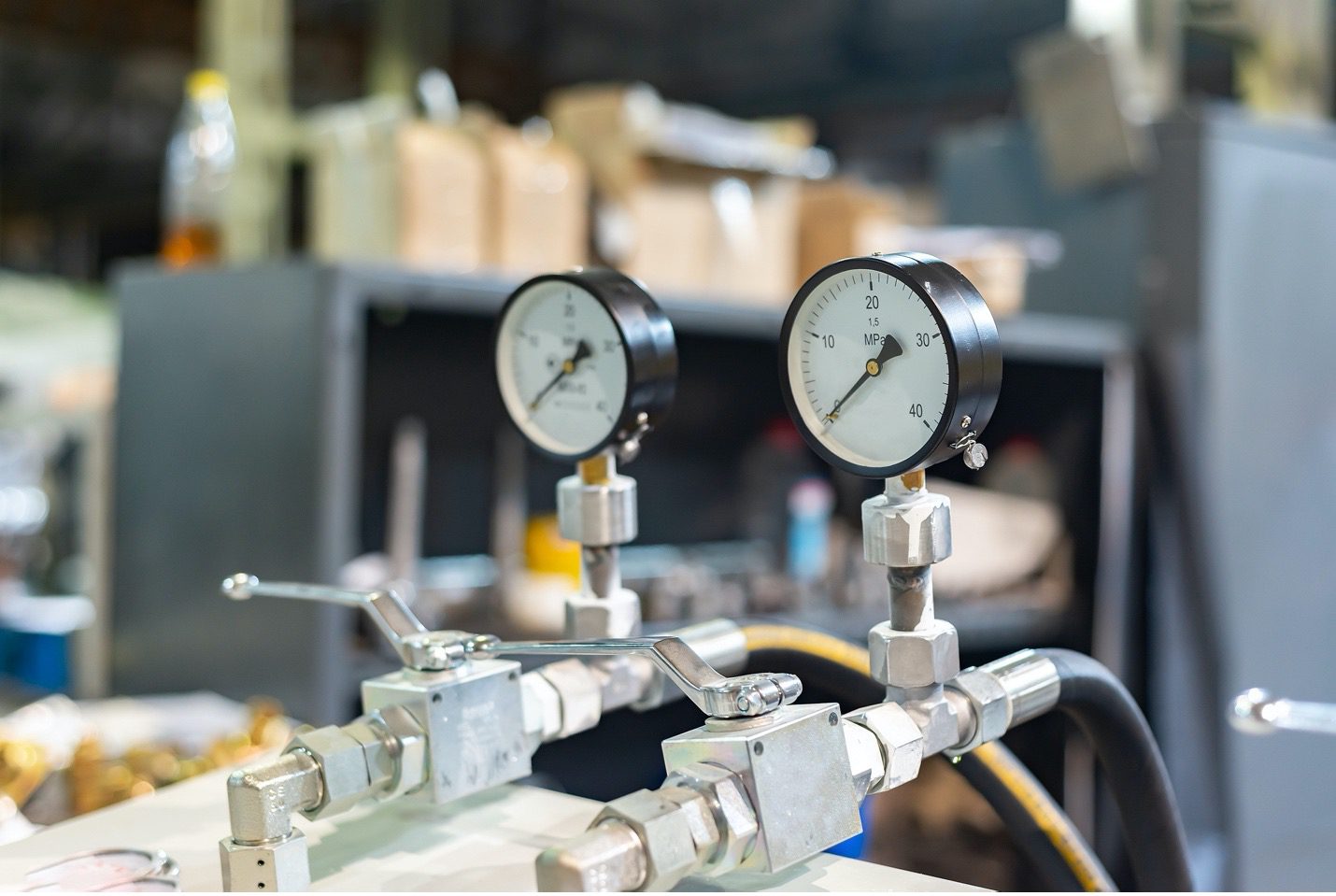
Pressure gauges are essential devices that can help you measure the amount of pressure in any given environment. Depending on the intended pressure gauge application, many types of pressure gauges are designed to give the most accurate results. That means choosing your pressure gauges wisely to get the results you want. Pressure gauges can be mechanical or hydrostatic. In this article, we have listed the different types of pressure gauges and how they’re used to help you understand and choose your preferred type.
Types of pressure gauges
Here are the eight types of pressure gauges and how they work.
- Capsule Pressure gauges: Contains two thin concentric corrugated diaphragms sealed tightly together. When you apply pressure, the diaphragm expands and contracts. This creates rotary movements that can be seen on the gauge.
- Bourdon Tube pressure gauges: This pressure gauge uses a flexible tube to measure pressure up to 1000 bar and down to -1 bar of fluids, gas, or steam. They have an accuracy ranging between ± 0.1% and ± 2.5% in fulfilling scale deflection. They are made of stainless steel, brass, or nickel.
- Diaphragm pressure gauges: This gauge is elastic and gets displaced when pressure is applied. It works like the Bourdon pressure gauge, but it uses a diaphragm instead of a flexible tube. It can measure pressure from 40 bar to -1 bar in fluids, steam, or gas.
- Absolute Pressure gauges: They’re used to measure natural fluctuations of atmospheric pressure. Unlike other gauges, the absolute pressure gauge is not affected by changes in latitude, making it an ideal choice for HVAC systems, distillation processes, and aeronautics.
- Piezometer pressure gauges: They’re used to measure medium pressure in different fluids using a simple glass tube open on both ends. One end is open to the atmosphere, while the other is connected to a pipe where fluid pressure is measured.
- Manometer pressure gauges: They mainly measure fluid pressure by balancing a single column of fluid against another. They are the simplest types of gauges consisting of a transparent tube in the form of a “U” partly filled with manometric fluid.
- Differential pressure gauges: They measure the pressure difference between two chambers connected by an element that moves according to the pressure changes. The element can move back and forth, which causes the pointer on the gauge to provide a digital display reading.
- Bellows pressure gauges: They’re made of thin-walled springy metal connecting tubes that form an accordion shape. As you apply pressure, it acts on the bellows on the free end, causing it to expand and move. Due to their sensitivity, they are mainly used for low-pressure applications.
Uses of pressure gauges
Here are the most common uses of pressure gauges.
Low-pressure applications
When you need to measure pressure in liquid or gaseous form, you can use pressure gauges, provided they don’t obstruct its functioning. Examples of low-pressure applications include pneumatic systems, plant construction processes, and cleanrooms.
Commercial and industrial processes
Most general-purpose pressure gauges can measure pressure, particularly in refrigeration and Heating and Ventilation Air Conditioning (HVAC). Industrial pressure gauges can be more suitable for industrial processes that don’t block the pressure system and can be used in manufacturing industries in OEM applications, water treatment, hydraulic, and RO industries.
Sealing leak paths
Some gauges can work perfectly to seal potential leaking paths. These gauges can also be used in various industrial processes to meet product compatibility requirements, vibrations, viscous applications, corrosive chemicals, pharmaceutical and sanitary requirements.
Precise calibrations in laboratories
You can use laboratory pressure gauges to achieve precise calibration when testing and reviewing samples and specimens. Most of these gauges are designed to function in extreme environments and measure between varied applied pressure such as chemical and air handling applications.
Mid-West Instrument
Since 1958, Mid-West Instrument has been a leading global manufacturer of differential pressure gauges, transmitters, and switches. Our company is family owned and operated from our facility located in Sterling Heights, MI.
Our state of the art factory is equipped the latest CNC machine tool technology, test equipment, calibrations standards, and oxygen clean room. This allows us to maintain precise tolerances and product quality with the shortest lead times in the industry.
Contact our experienced professionals to learn which differential pressure instrument best fits your application.

